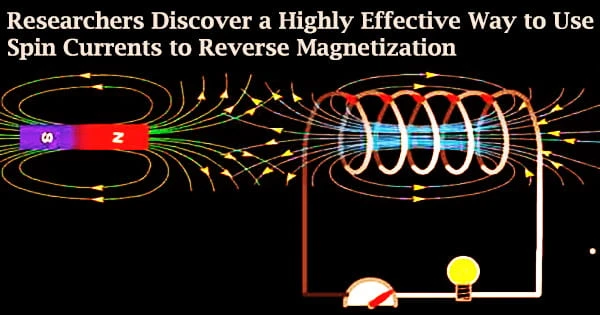A significant step has been made in the development of high-density, low-power nonvolatile magnetic memory by an international research team.
“We established a new method to enable magnetization reversal on perpendicularly magnetized ferromagnets without the need for an external magnetic field,” said Makoto Kohda, co-author of the study and professor at Tohoku University’s Graduate School of Engineering.
The intrinsic spin of electrons and the magnetic movement that goes along with it are optimized in spintronic devices. Spintronics will be a significant component of the next generation of nanoelectronic devices since society demands higher-performing electronics with lower power usage.
A spin-orbit torque (SOT) is produced on ferromagnets when a charge current is converted to a spin current, allowing for electrical control of the magnetization. Currently, this process is unidirectional, and switching perpendicularly magnetized ferromagnets requires the utilization of external magnetic fields.
International collaboration is the key for demonstrating next-generation technology in nonvolatile memory. The next step for us will be to apply this principle to spintronic devices’ mass production to help usher in the power-saving technology required for IoT and AI.
Professor Makoto Kohda
Commercial feasibility depends on so-called field-free switching and decreased current density for lower energy usage.
In addition to members of the Korea Advanced Institute of Science and Technology (KAIST) such as researcher Jeonchun Ryu, professor Byong-Guk Park, and professor Kyung-Jin Lee, Kohda’s team also included Professor Emeritus Junsaku Nitta from the Graduate School of Engineering at Tohoku University.
Because polycrystalline CoFeB/Ti/CoFeB is already used in the mass production of spintronic devices, they were able to harness spin created in all directions to create field free switching.
In comparison to the previously used spin current-based magnetization reversal, the novel approach also resulted in a 30% lower current density.
“International collaboration is the key for demonstrating next-generation technology in nonvolatile memory. The next step for us will be to apply this principle to spintronic devices’ mass production to help usher in the power-saving technology required for IoT and AI,” added Kohda.





